News
Visit to Qinshan Village- The Low Carbon future village
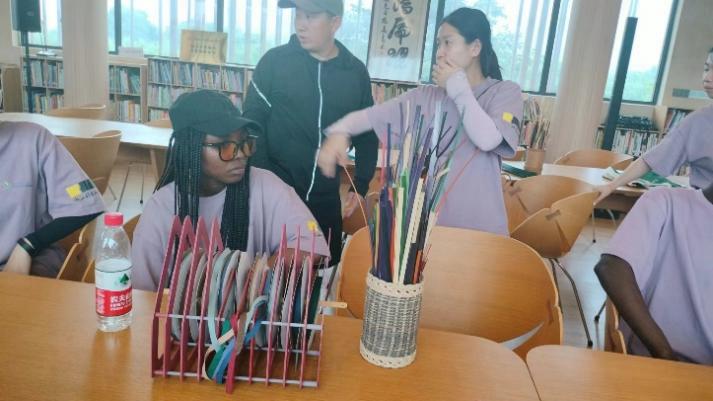
Visit to Qinshan Village- The Low Carbon future village
By: Augustine Wereuche Praise
Qingshan Village is located in the northeast of Huanghu Town, Yuhang District, in Hangzhou City, Zhejiang Province China. Qingshan Village covers an area of 45.6 km2. The village has three medium-sized reservoirs, with approximately 80% of the land area covered by forests. This village has become a popular destination due to its ongoing environmental protection activities and lifestyle improvement policies. It is one of China’s Low Carbon Village pilot programs. Our visit to this awesome village during the summer was both exciting and special.
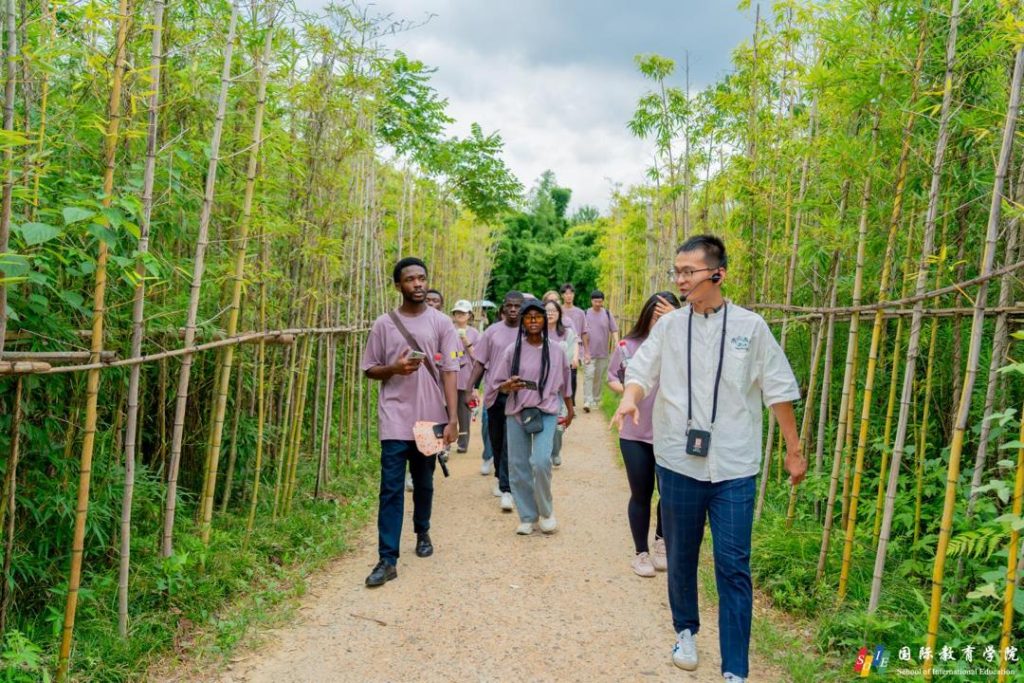
Upon arrival in the village, we were greeted by a guide, who welcomed us with a smile and took us to the guest reception area. The guide then provide us with a concise overview of the village’s main features, the ongoing activities and the villagers’ intended outcomes. From the information provided by the guide, we got to understand that the village was a pilot project initiated by Zhejiang Province with the idea of achieving a net zero carbon city. The village had previously experienced a significant environmental challenge which impacted the primary source of community water supply. This pollution was caused by the use of fertilizers and pesticides by the local farmers. From 2014 to 2023, the village underwent significant development. Initially, there was a strong emphasis on water and environmental protection. This was followed by the creation of an art and design village. The third stage was characterized by significant government intervention. The government provided funding for the renovation of the village infrastructure and the construction of the public spaces. As a result of these development, the living standard of the village has greatly improved.
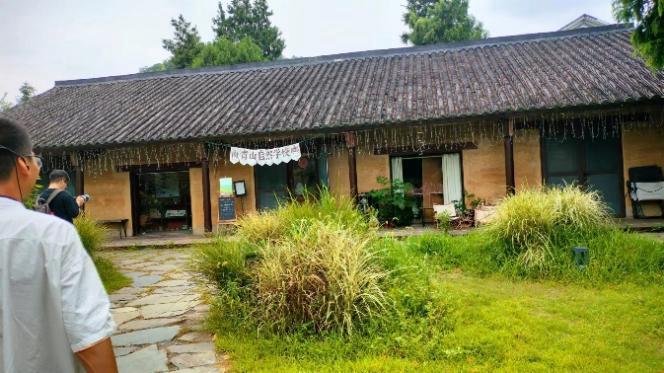
Additionally, the village has begun to attract tourists and young people from China and abroad.
After the brief introduction, we left the room to visit the Art and Design Library. This material library was a project executed by Chris, a German designer, in collaboration with two other people. The objective of the design team was to foster cultural creativity among the villagers. The library showcased a variety of arts and crafts created using locally sourced materials. The library serves as a platform for integrating indigenous arts and craftsmanship with modern design styles. This activity helps preserve local crafts skills while fostering anenvironment of learning for villagers on how to apply their local craftsmanship with contemporary arts.
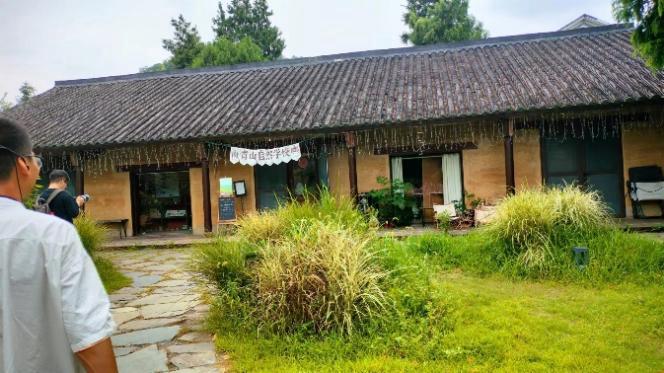
Additionally, the library has been observed to attract a diverse range of visitors and design companies to the village. It is a place where you can explore weaving culture, tie- die techniques, and coloring methods, which helps to preserve local craft skills and enhance the livelihood of the villagers.
The design library and other ongoing projects have become a source of interest for young people, while also helping to reduce the rate of constant influx of young people to the city. The library’s collection includes both modern and contemporary art, which helps to ensure the preservation of local artistic traditions.
Following the visit to the library we proceeded to the conflict resolution area. This is where the villagers could sit together to resolve any conflicts or disagreements regarding the maintenance of the village. It is also used as a forum to discuss potential improvements to the village. It helps creates an atmosphere where everyone opinion could be heard; all disputes are said to be settled here. This providesvillagers with a platform actively engage in their community, ensuring they feel valued and protected from external influences.
The next destination was the Qingshan Nature School, which is led by Principal Jill Quan. The school provides education on environmental protection to young people. It also offers a free nature summer camp for children every year, which enabled children to learn about the nature and how important it is to ensure the environment is protected.
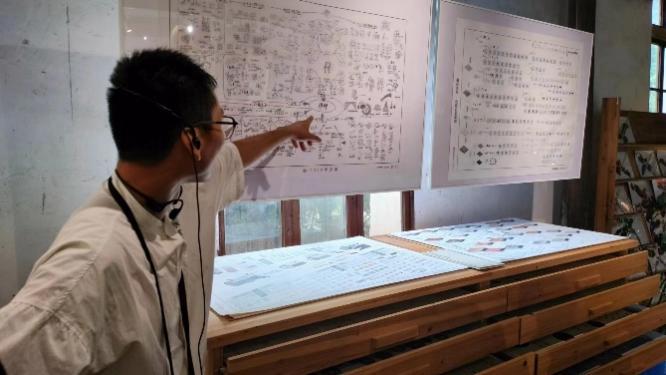
Later, we took a short hike to go see the river, The river was the primary source of water for the villagers. It has been under various treatments. The objective is to enhance the water quality of the river, which was previously severely polluted.
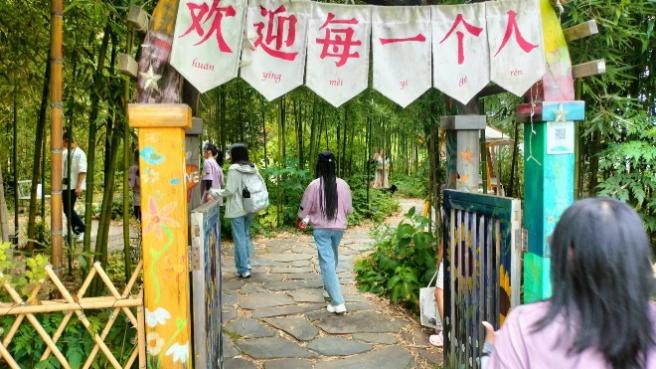
The contamination is the result of the use of artificial fertilizers and pesticides. Upon arrival, everywhere looked so neat and well organized. The river area has been decorated with artistic paintings and protected with some walls. Some technology effect was also added to the river area. Visitors can scan a QR code and then get a short-animated story of the village history. I found this to be really cool and interesting. There were also some warning signals if one moved too close to the river.
After our visit to the river, we later went back to a place where we were served some native food. We were presented with various kind of dishes. Each did have a unique taste; it truly represented the native culture of the villagers. Afterwards we had a little arts and craft section where we were taught the art of hand fan making using bamboo sticks. The teacher taught us how to carefully arrange the bamboo stick and how to craft them to form a design. It was truly a distinctive experience.
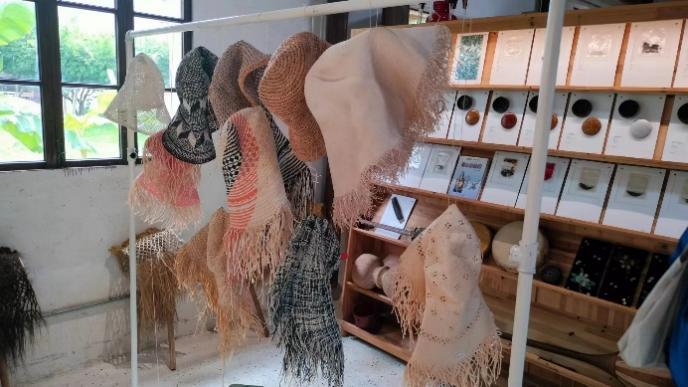
In conclusion my visit to this unique village was not only educative but exciting. I discovered a lot about China than I ever knew, I was particularly impressed by the remarkable transformation of a village into a modern and nature friendly area.
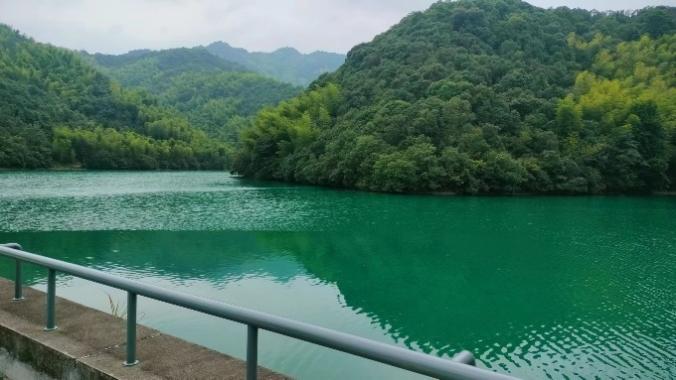
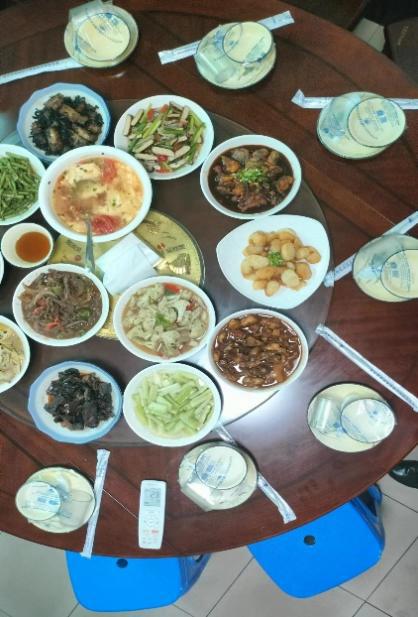
The blend of technology and nature in the village was striking, and the commitment to this project was admirable. The village to me was a city well organized and yet in sync with nature.
*Augustine Wereuche Praise is Student with ID: 9230222004
News
BOTMA: The agency will not tolerate underage driving in Maiduguri

BOTMA: The agency will not tolerate underage driving in Maiduguri
By: Bodunrin Kayode
The general manager of the Borno State Traffic Management Agency (BOTMA), Eng. Baba Tijani, has said that his agency will not tolerate “underaged” kids driving keke napep in Maiduguri and environs.
The GM warned that the brazen display of wrongdoing by Keke Napep was becoming alarming, especially with lots of underage kids being caught committing such crimes.
The Borno traffic management agency boss vowed to bring owners of such erring Keke napeps to book to check their reckless behavior on the streets of the Maiduguri metropolis and beyond.
Tijani, who spoke exclusively during the 2025 Federal Road Safety Corp RS12.2 Borno special marshals sectoral workshop, said that his management is aware of the dangerous excesses of the Keke Napep riders in the town and has never taken it lightly with them.
“I can assure you that we have details of all the excesses of the Keke Napep drivers in the city, and we are not joking with them. As long as we have their details, we can trace and deal with them, and the rest is history.
“I can assure you that there is no keke that is not registered by us regardless of their high numbers. For as long as they are registered in our data bank, we know how to trace them. Even if the keke is used for robbery, I assure you, we know how to sanction them for as long as they are within the state.
“By the way, it is not true that we are not capable of handling them in spite of their numbers and the enormous nature of their offenses. We do not overlook the misdemeanor of Keke Napep drivers in Maiduguri no matter how small they are.”
He told this reporter that under his watch kids who are under 18 were totally forbidden from driving keke napeps in Maiduguri metropolis, adding that residents should also avoid such keke napeps because they are obviously a death trap for commuters.
Eng. Tijani stressed that unless drivers are 18 years or above, they are not permitted to drive a keke napep in the entire Borno state, adding that only stable adults are registered as drivers of napep in their data bank used to sanction erring ones.
Tijani noted that for the remaining part of the year, his men will monitor the main roads in the metropolis thoroughly during the yuletide period to force the napep boys to conform to expected norms and behavioral patterns.
On staff strength, he added that the agency has been making use of what it has, hinting that “we have over 300 personnel in MMC and Jere alone, and we are trying to do our best with what we have even with the confusion at the Custom and Gamboru axis of the town.”
“We are aware of the challenges in many areas, and we believe that very soon the customs area will be handled. We are aware that the area is heavily congested in terms of traffic because the tunnel from one side to the other is not used, but I wish to assure commuters that all this will become history soon.
On the misbehavior of some of his staff, he noted that checks and balances have been placed within the system by management, adding that their provost marshals in white caps are out to oversee the erring staff and will send feedback to us on the next step.
Eng. Tijani called on the general public to cooperate with him and his management team by reporting erring marshals as and when wrongs were committed, adding that as soon as they are reported, action will be taken against such officials.
To press his point home, the GM revealed that about 30 erring marshals have been sacked so far from the agency, stressing that management does not drop their guards when it concerns portraying them in a bad light.
Speaking on the welfare of his staff, the GM agreed that there was an urgent need to boost the salaries of his marshals, as they are quite lower than the current minimum package.
He, however, announced that he was not leaning on his oars concerning their welfare because the matter has been tabled before the executive, and the governor is about to work on it, thereby taking care of his people.
Tijani regretted that they do not have a board that would assist them in putting their challenges on the front burner but is grateful to the media for doing justice to the plight of his people.
BOTMA: The agency will not tolerate underage driving in Maiduguri
News
Nigeria: No casualties after US bomb rocks Jabu Village in Sokoto

Nigeria: No casualties after US bomb rocks Jabu Village in Sokoto
By: Our Reporter
Residents of Jabu village in Sokoto state, Northwest Nigeria reported that there are no casualties following US bomb that rock the village on Christmas Day targeting bandits terrorists.
A video surface Monday morning showing some residents carrying heavy metal, which is said to be the bomb shell fired by US into the area.
Although there are no official comments yet to what happened in the Northwest, some residents believed that some targeted areas may have yielded most results.
NEWSng observed that following the reported US military targets on terrorists enclaves in the Northwest, top islamic clerics and certain individuals known to be marking comments in defense of the bandits and Fulani militias activities have been usually quiet.
When ABC NEWS contacted few clerics to speak on the attacks, they decline comments stating that they are also waiting to hear what the government would say with regard to the claimed by US President Trump.
“This involve US and Nigeria. I also heard but I was not there not can establish facts to what happened on Christmas Day in Sokoto. ” One of the cleric, who pleaded not to be mentioned in print said.
Another clerics, Malam Usman Tukur simply said “No comments.”
Also another who refuses to speak at all holds his lips in declining comments.
Nigeria: No casualties after US bomb rocks Jabu Village in Sokoto
News
Why US–Nigeria counter-terrorism cooperation remains critical to defeating insurgency

Why US–Nigeria counter-terrorism cooperation remains critical to defeating insurgency
By: Zagazola Makama
The ongoing United States–Nigeria counter-terrorism operations are critical not only to degrading terrorist networks, but also to helping the international community, particularly the U.S., better understand the scale, complexity and human cost of Nigeria’s long-running war against terrorism.
Nigeria has battled multiple terror and extremist groups for over a decade, with attacks spanning the North-East, North-West and North-Central zones, claiming thousands of lives, displacing millions and overstretching security and humanitarian resources.
Therefore, deeper operational cooperation allows the U.S. to see firsthand the terrain, tactics and evolving threat environment Nigerian forces contend with daily from suicide bombings and IED warfare to cross-border terrorism, banditry and extremist collaboration.
Joint operations provide a clearer picture of what Nigeria is passing through. It is different from reading intelligence reports. When partners operate together, there is a better appreciation of the sacrifices, the operational difficulties and the resilience required to fight terrorism in this environment.
Though, nothing new in what the Nigeria Air Force was already doing but the cooperation, will enhanced intelligence sharing, surveillance, training and technical support, while also improving Nigeria’s capacity to disrupt terrorist logistics, communication and financing networks.
Nigeria brings critical advantages to the partnership, including local knowledge, community structures and long-term operational presence, while the U.S. contributes advanced intelligence, surveillance and reconnaissance capabilities, precision strike support and global counter-terrorism experience.
This synergy will help narrow intelligence gaps, improve early warning systems and strengthen the ability of Nigerian forces to respond to threats more proactively. Beyond military gains, the partnership helps place Nigeria’s security challenges in proper global context, correcting misconceptions that often underestimate the intensity of terrorist violence in the country.
The collaboration helps the U.S. and other international partners understand that Nigeria is not facing isolated incidents but a sustained, multi-front war. That understanding is essential for sustained diplomatic, technical and humanitarian support, rather than the rhetoric being purported about the conflict.
The partnership also sends a strong message to terrorist groups that Nigeria is not isolated in its fight, and that attacks on civilians and security personnel attract international attention and consequences.
However, counter-terrorism cooperation must go beyond kinetic operations. Those executing these operations must put emphasized on the importance of civilian protection, community engagement and post-conflict stabilisation, as lasting peace cannot be achieved through force alone.
Why US–Nigeria counter-terrorism cooperation remains critical to defeating insurgency
-

 News2 years ago
News2 years agoRoger Federer’s Shock as DNA Results Reveal Myla and Charlene Are Not His Biological Children
-

 Opinions4 years ago
Opinions4 years agoTHE PLIGHT OF FARIDA
-

 News8 months ago
News8 months agoFAILED COUP IN BURKINA FASO: HOW TRAORÉ NARROWLY ESCAPED ASSASSINATION PLOT AMID FOREIGN INTERFERENCE CLAIMS
-

 Opinions4 years ago
Opinions4 years agoPOLICE CHARGE ROOMS, A MINTING PRESS
-
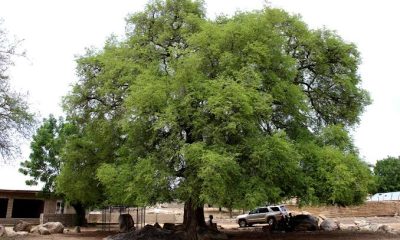
 News2 years ago
News2 years agoEYN: Rev. Billi, Distortion of History, and The Living Tamarind Tree
-

 ACADEMICS2 years ago
ACADEMICS2 years agoA History of Biu” (2015) and The Lingering Bura-Pabir Question (1)
-

 Columns2 years ago
Columns2 years agoArmy University Biu: There is certain interest, but certainly not from Borno.
-

 Opinions2 years ago
Opinions2 years agoTinubu,Shettima: The epidemic of economic, insecurity in Nigeria





